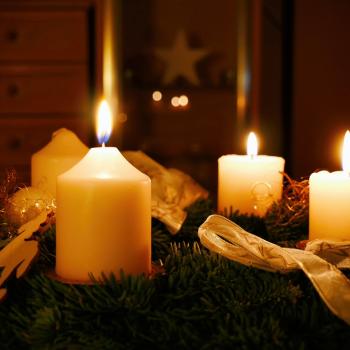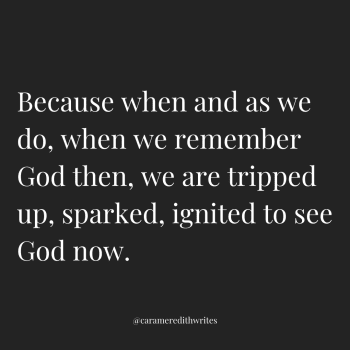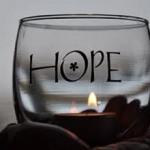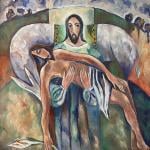Week before last, my boys and I stopped by the hardware store afterschool for a cord of firewood and a new lighter. When dusk fell early that night, we trudged out to the backyard and attempted to light a fire in the fire pit.
Now, I’ll have you know, I’ve been camping a time or two. I know how to stack the wood (in a pyramid shape). I know to add kindling, lots and lots of kindling, and to fan and flame tiny bits of fire until the bigger, thicker pieces of wood follow suit. Most of that knowing happened that night, even if it took us several trips to the dryer for lint and a couple of old magazines to really get the fire started.
But then, it caught. The logs didn’t need anymore fanning and flaming, and we, in turn, were able to sit back and gather as we meant to do in the first place. Our hands cupped over the firepit, desperate for warmth. Then, because it was December 21st, we read a paragraph about Blue Christmas or Longest Night, a tradition started by a Canadian hospice group in the 80s that many communities around the world now adopt to acknowledge the long and sad parts of the holiday season. We took a minute to think and maybe even honor and perhaps even release the things that were sad in our lives – even if we didn’t speak them out loud, sadness was still in that place.
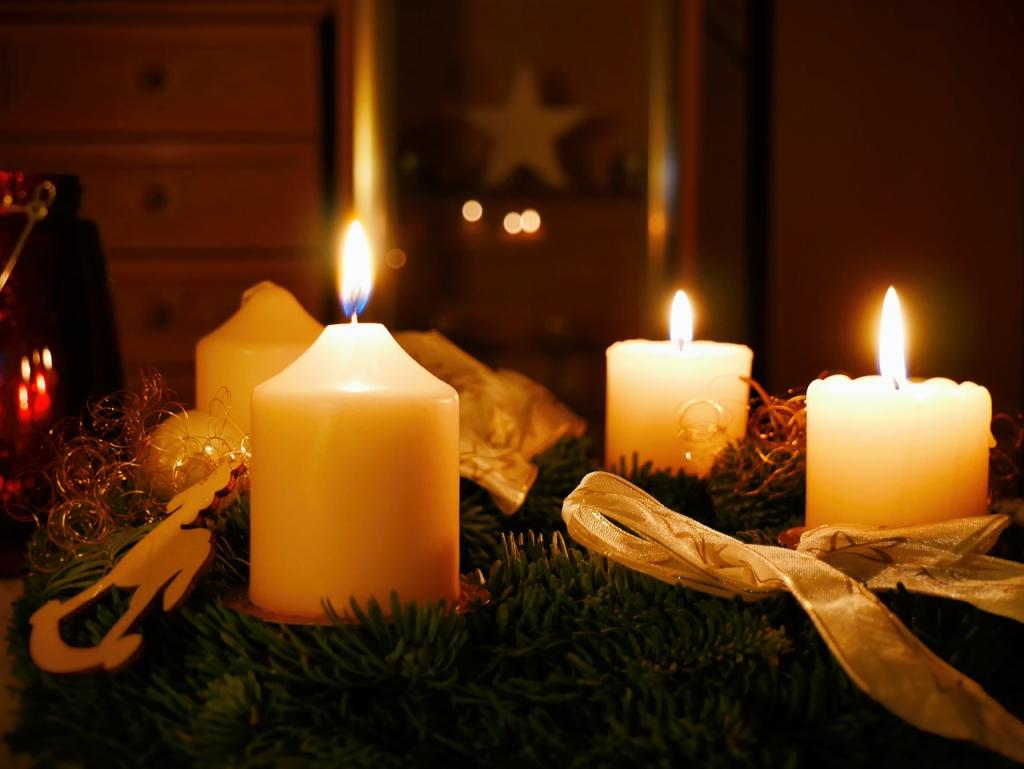
Then, because December 21st is also the longest night of the year, we read a poem about Winter Solstice, when “all the long echoes sing the same delight/This shortest day.” For some, this day is a time to release all that you need from the past year and set intentions for the upcoming year. It’s a time of looking ahead, as you also look back. It’s a time of holding the things of the past as you think about the unknown of the future.
And, I don’t know, maybe it was just me, but when we pivoted from Blue Christmas and Longest Night to Winter Solstice, it wasn’t just about sadness anymore. It was also about hope. It was about looking forward to all that lies ahead, even if things look rather messy in the present and we don’t know what’s going to happen tomorrow, let alone in an hour’s time.
Because for some, Blue Christmas is Longest Night is Winter Solstice too. And I tell you this story of a random Thursday night, because when I sat with this week’s Gospel reading, I couldn’t help but notice the both/and of these 18 verses too.
In Luke 2:22-40, Jesus is about 40 days old. His parents do right by Jewish law, as the text says four times, taking him to the temple for purification purposes. But it’s the encounter with Simeon, a man who was “righteous and devout,” who was “looking forward to the consolation of Israel” that really caught my attention.
In this passage, when Simeon arrives at the temple, he holds Jesus the infant in his arms. Then, he talks to God, saying, “Master, now you are dismissing your servant in peace, according to your word, for my eyes have seen your salvation, which you have prepared in the presence of all peoples, a light for revelation to the gentiles and for glory to your people Israel.” And the jaws of every person in the studio audience, which in this case is the Jewish temple, hang to the ground.
Mary and Joseph are amazed at what was said about their child. Simeon, who’s just saying out loud what God already told him, is amazed that it’s really, actually, finally happened. I imagine Luke the writer was amazed too.
But the part that really catches my eye, especially when it comes to bigger, grander ideas of paradox, is in what Simeon says after he blesses the whole family. He pulls Mary aside, and to her alone, he says, “This child is destined for the falling and the rising of many in Israel and to be a sign that will be opposed so that the inner thoughts of many will be revealed – and a sword will pierce your own soul too.”
I mean, it’s one thing when, as a parent, you head to the pediatrician’s office during the annual visit. They weigh and they measure a child, they test their eyes and their ears. And then, occasionally, they make a prediction about the child’s future height: Based on this chart, and this is just a prediction, mind you, but your son, who is in the 98thpercentile for height, will be approximately 6’3” when he grows up. They declare this because it’s a fun bit of dice-rolling, predictive math on their parts. As a parent, I receive their words: So, you’re saying I might as well invest in a backyard cow for a daily gallon of milk because my kid really is going to eat us out of house and home.
But this was no pediatrician’s prediction. This was a righteous and devout man of Israel, a man for whom the Holy Spirit had already latched onto. This was a man who already knew the truth of Jesus.
This was about the falling and rising that would happen in his name – that with him would come peace and salvation on the one hand, and resistance and violence on the other. This was about Jesus, the same one we honor on this first Sunday of Christmas, being good news to some and bad news to others, about him bringing joyful news to some and challenging times to others.
As one theologian says, Simeon’s peace came “not from thinking that everything will be peaceful in light of Jesus’ arrival – it will not be – but from deep awareness that Jesus will challenge the Roman Empire that offered its own version of peace and reserved it for a select few.” For everyone will benefit from this challenge he brings. Everyone can benefit from the salvation he offers.
But, it’s messy.
Just as light is present, so darkness is too.
As my boys and I saw in the backyard that Thursday night, light pierced through the darkness – just as we’re prone to believe about Advent and cling to in the Christmas season afterwards.
What does it mean to then honor the light, even in the midst of darkness? Knowing darkness will be present, darkness will come, darkness will be a part of our story, what does it mean to still look for the light?
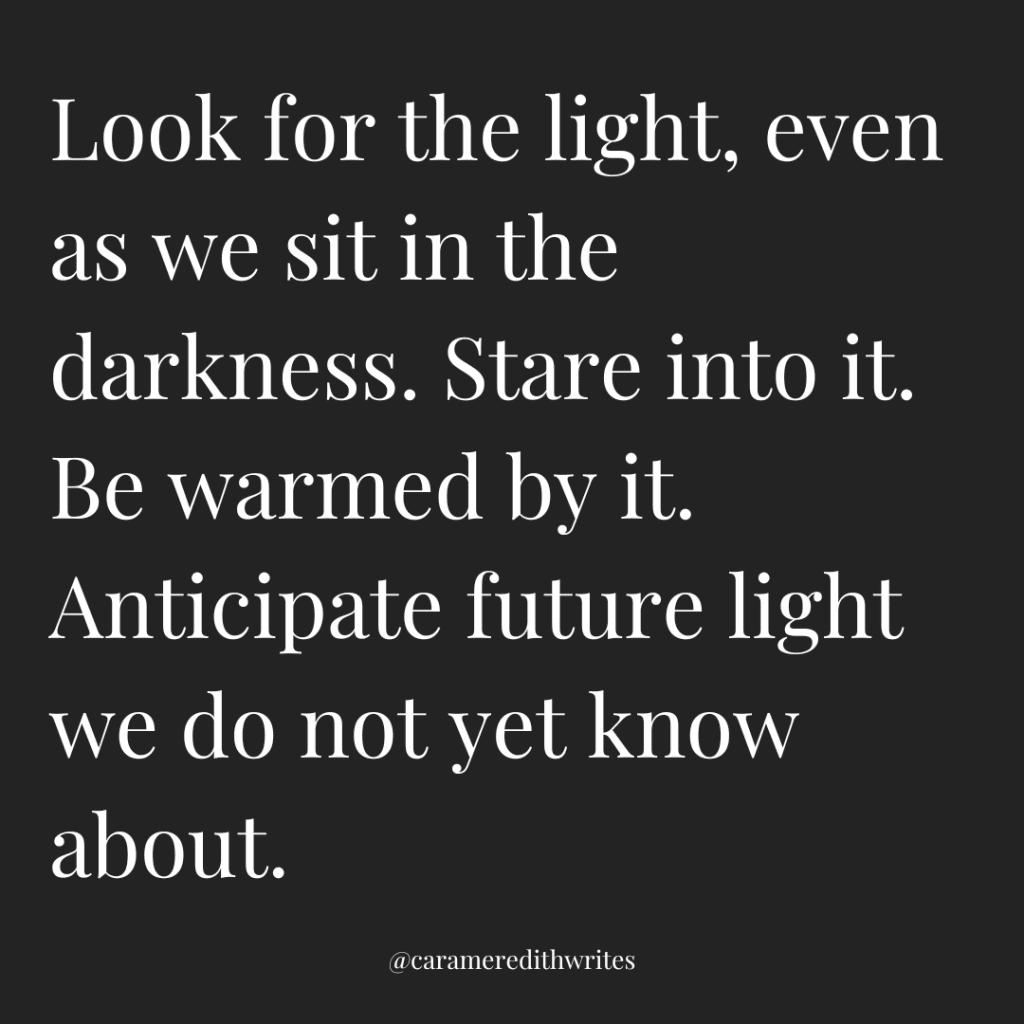
And what does it mean to hold two seemingly opposite things at the very same time?
I think it means being present to the human experience today. Our world is not without pain or death – not in our own families, when cancer and illness and tragedy strike. Not in our cities, when police officers are slain and violence reaches an all-time high. Not in our world, when the Israel-Hamas War rages on, and Christmas is canceled in Bethlehem in solidarity with the people of Gaza.
We hold that these dark, sad, hard, painful things live in tension with the light that is still present in each one of these places.
What then is our invitation? Look for the light, even as we sit in the darkness.
Stare into it. Be warmed by it. Anticipate future light we do not yet know about.
Then, if we can, cling to the hope this light also brings.
Amen.
—
This sermon was offered to the good people of St. Paul’s Episcopal Church in Oakland, California on December 31, 2023. If you liked it, you also might like “What if God is Not Only in the Peace but Also in the Pain?” Otherwise, might light be found in the midst of darkness.




